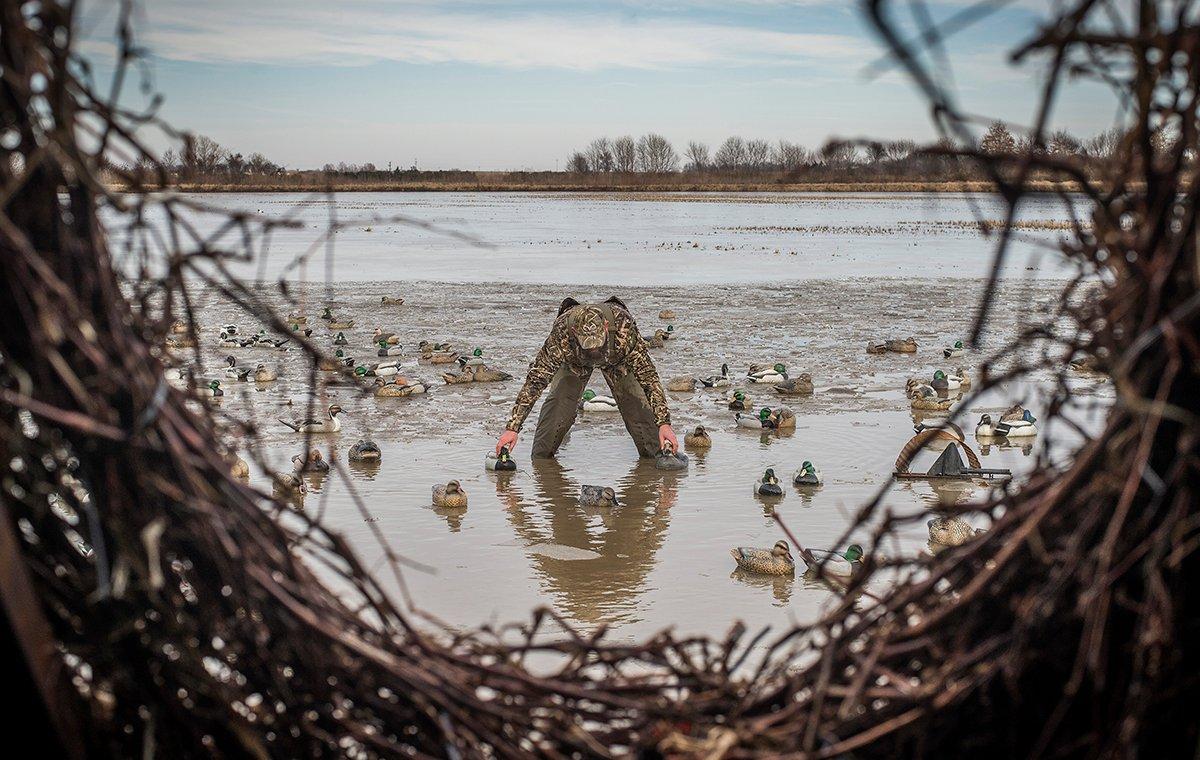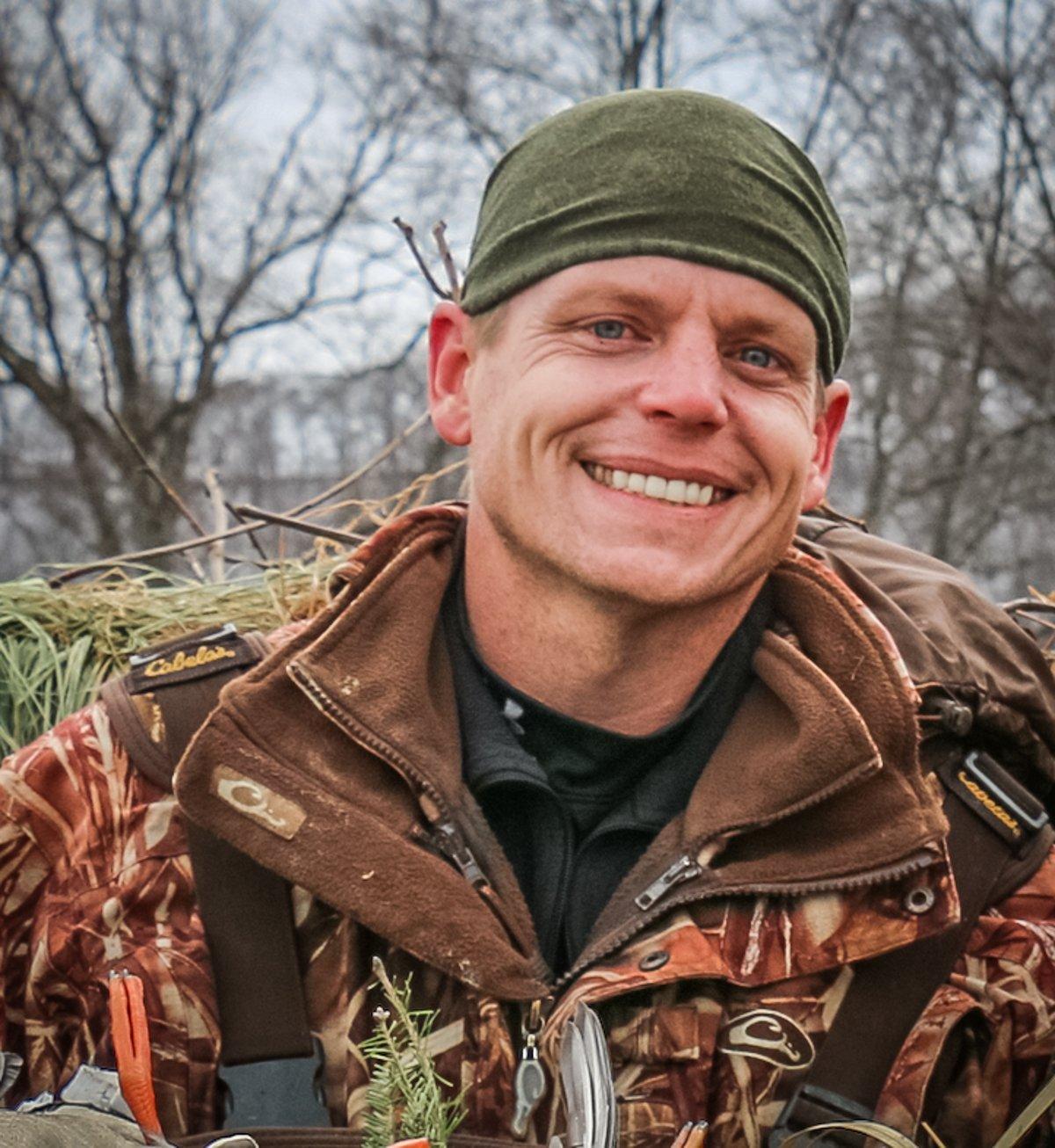A Mississippi River Guide Tells You How to Bring 'Em Close
You've been there. Birds eye your spread from afar, tip their wings, bank hard across the wind and zip toward you … only to pass by at marginal range. Or land short. Or flare and disappear.
Some days, ducks and geese won't finish. Maybe they're pressured and skittish, but usually, the problem rests with your hide and decoy setup.
Jeremy Dersham, owner of Ridge and River Running Outfitters, makes his living putting birds in front of hunters as a guide on the famed Pool 9 of the Mississippi River. Here's how he makes sure his clients consistently enjoy feet-down, wings-back, kill-hole shots.
For Starters
One of my biggest cures is the way I lay out my decoy spread, Dersham said.
For years, I was in the habit of setting my spread out 25 to 35 yards away from my crew. Not any more. My X is normally between 8 to 10 yards. Through the years, I've had more clients complain about missing due to the birds being too close, which is a real thing, but you have ample opportunity to allow yourself a second shot along with giving yourself plenty of time for your first shot. I truly believe a lot of people set up their spread too far away from them. If birds are skirting your spread and your decoys are close, they should now be within plenty of range for a shot opportunity (20 to 30 yards).
Cover Check
Dersham also scrutinizes his setup and concealment to make sure sharp-eyed ducks aren't picking him out.
I'm checking my hide again and again if a few flocks land wide, he said. You normally have a few birds demonstrate this behavior — mallards and gadwalls are notorious for this — but if it becomes a theme, I don't waste time. Rather, I check my hide, check it again and add cover. I normally give it two to three flocks if birds are moving well.
Natural Scene
It's also wise to check your spread repeatedly and ensure it has a relaxed look.
I want some space between my decoys so they don't look spooked, Dersham said. If you've ever spent much time watching ducks and geese, you'll see nervous birds packed right together. Normally, they don't stick around long. Rather, they're up in the air. When you see relaxed birds, you'll see birds feeding, skimming and feeding on the water, along with birds fast asleep. I want to have my spread looking relaxed as possible.
He'll also tweak his spread based on recent migration activity and hunting pressure.
If I know I'm hunting stale birds, my decoy spread gets bigger, he said. Specifically, I'm adding more sleeper decoys to the spread trying to replicate an extremely relaxed look.
Find Others
If nothing seems to work, Dersham falls back on a good habit: scouting to find fresh birds and relatively unpressured areas.
If birds continue to flare, that's telling me they are quite educated in the immediate area, he said. We've all experienced bird-watching days. Instead of trying to concentrate on stale birds for a significant amount of days, I'm back in the boat or truck scouting. I'm looking for flight lines, loafing and feeding areas, or any hidden-away areas the birds are using. I'm not looking for numbers but rather smaller groups that can be accessed.
Finish 'Em
Try Dersham's tips next season, and create your own. Getting ducks and geese sure-kill close can be a constant challenge, but the rewards — full straps and happy retrievers — make it more than worthwhile.
Click here for more Realtree waterfowl hunting content. And check us out on Facebook.









